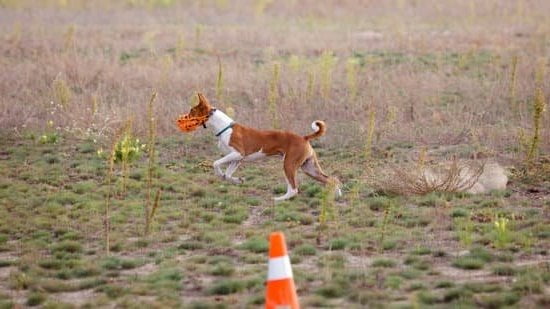Training a dog with a ball can be a fun and effective way to teach them new skills and behaviors. Using a ball as a training tool not only provides mental stimulation but also helps build a strong bond between you and your furry friend. In this article, we will explore the benefits of using a ball for training, how to choose the right ball for your dog, basic and advanced training techniques, overcoming challenges, and more.
One of the key benefits of training your dog with a ball is that it taps into their natural instinct to chase and retrieve objects. This can make the training process engaging and enjoyable for both you and your pet. By incorporating a ball into your training sessions, you can keep your dog physically active while improving their obedience and responsiveness to commands.
Choosing the right ball for your dog is essential to ensure a successful training experience. Factors such as size, material, and durability play a crucial role in selecting the appropriate ball for your pet. Establishing a positive association with the ball is also important in the initial stages of training. By following some simple steps and techniques, you can set the foundation for a successful training journey with your furry companion.
Benefits of Using a Ball for Training Your Dog
Dogs are known for their love of play and engagement, making the use of a ball an effective tool for training. One of the key benefits of using a ball for training your dog is the inherent motivation that comes with it.
Balls can trigger your dog’s natural prey drive, making them more eager to engage in activities like fetching, catching, and chasing, which are essential elements of training. This motivation can help make training sessions more enjoyable for both you and your furry friend.
Another advantage of using a ball for training is its versatility. Whether you have a small breed or a large one, balls come in various sizes to suit different dogs. Additionally, balls made from different materials, such as rubber, foam, or even tennis balls, offer options based on your dog’s preference and chewing habits. This variety allows you to choose the right ball that aligns with your dog’s needs and preferences while ensuring durability and longevity.
| Benefits | Description |
|---|---|
| Motivation | Balls trigger natural prey drive and make training enjoyable. |
| Versatility | Balls come in various sizes and materials to suit different dogs. |
| Stimulation | Training with a ball provides mental challenge and physical exercise. |
Choosing the Right Ball for Your Dog
When it comes to training your dog with a ball, one of the key factors to consider is choosing the right ball for your furry friend. The size, material, and durability of the ball can greatly affect the effectiveness of the training sessions and your dog’s overall experience. Here are some important considerations to keep in mind when selecting a ball for your canine companion.
Size Matters
The size of the ball you choose should be appropriate for your dog’s breed and mouth size. A ball that is too small can pose a choking hazard, while a ball that is too large may be difficult for your dog to pick up and carry. It is essential to select a ball that is just the right size for your dog to ensure safety during playtime and training sessions.
Material Selection
The material of the ball is another crucial factor to consider. Opt for a durable and non-toxic material that can withstand your dog’s chewing and playing habits. Tennis balls are popular choices for playing fetch, but they may not be suitable for aggressive chewers as they can easily be torn apart. Look for balls made from rubber or high-quality plastic that are designed specifically for dogs.
Durability
Durability is key when selecting a ball for training your dog. Choose a ball that can hold up to rough play and frequent use without falling apart. Look for options with reinforced seams or extra layers of protection to ensure longevity. Investing in a high-quality, durable ball will not only save you money in the long run but also provide your dog with a reliable toy for training sessions and playtime.
By carefully considering the size, material, and durability of the ball you choose for your dog, you can set them up for success in their training journey. Remember, finding the perfect ball that meets your dog’s needs will not only enhance their learning experience but also strengthen the bond between you and your furry companion as you embark on this fun and rewarding adventure of training with a ball.
Establishing a Positive Association With the Ball
Introducing the Ball
When introducing the ball to your dog for the first time, make sure to choose a quiet and distraction-free environment. Sit on the floor with your dog and show them the ball without forcing it on them. Allow your dog to sniff, inspect, and interact with the ball at their own pace. Use treats or verbal praise to reward any positive curiosity or interest shown towards the ball.
Positive Reinforcement
During the initial stages of training with the ball, focus on rewarding desired behaviors such as touching or nudging the ball with treats, praise, or playtime. This helps your dog associate the ball with positive experiences and encourages them to engage further in training activities. Remember to be patient and consistent in your approach, as every dog learns at their own pace.
Building Confidence
As your dog becomes more comfortable with the ball, gradually introduce simple commands like “fetch” or “drop it” while using the ball during training sessions. Celebrate small victories and progress made by your dog with enthusiasm and encouragement. Building confidence through positive reinforcement will lay a solid foundation for advanced training techniques using the ball in the future.
Basic Training Techniques With a Ball
Training your dog with a ball can be a fun and effective way to bond with your furry friend while also providing mental and physical stimulation. One of the most basic and popular training techniques with a ball is teaching your dog how to fetch, drop it, and catch. These foundational skills are not only entertaining for both you and your pup, but they also lay the groundwork for more advanced training in the future.
To begin training your dog with a ball, start by establishing a positive association with the toy. Introduce the ball to your dog in a playful manner, allowing them to sniff, paw at it, and eventually pick it up. Use treats or verbal praise to reward any interactions with the ball, creating a sense of excitement and anticipation around this new object. Once your dog shows interest in the ball, you can move on to teaching the basics of fetch.
When teaching your dog how to fetch, start in a confined space such as a backyard or living room. Throw the ball a short distance away and encourage your dog to retrieve it by using commands like “fetch” or “go get it.” When they bring the ball back, praise them lavishly and reward them with treats or extra playtime.
Gradually increase the distance of the throws as your dog becomes more proficient at fetching, always reinforcing positive behavior during each training session. With patience and consistency, you’ll soon have a reliable fetch partner ready for hours of interactive fun.
Advanced Training Techniques
Training your dog with a ball goes beyond just playing fetch. By incorporating advanced training techniques using the ball, you can enhance your dog’s mental stimulation and obedience skills. Teaching tricks and commands using the ball not only strengthens the bond between you and your furry friend but also provides a fun and interactive way to continue their learning.
One of the advanced training techniques you can use with a ball is teaching your dog to perform specific commands while interacting with the ball. For example, you can teach your dog to sit or stay while holding onto the ball, reinforcing good behavior with positive reinforcement such as treats or praise. This not only challenges your dog mentally but also helps them understand that listening to commands leads to rewards.
Additionally, you can incorporate more complex tricks into your training sessions using the ball. For instance, teaching your dog to balance the ball on their nose or paws can improve their coordination and focus.
By breaking down these tricks into smaller steps and rewarding incremental progress, you can effectively train your dog to perform impressive feats that will surely impress family and friends. Remember to be patient and consistent in your training approach, as each dog learns at their own pace.
Moreover, mixing up training sessions with a variety of tricks and commands using the ball will keep your dog engaged and motivated. It is essential to keep each session short and enjoyable for both you and your pet to prevent boredom or frustration. By incorporating different challenges and variations in your training routine, you can continue to strengthen the bond with your furry companion while watching them grow and thrive through positive reinforcement methods like using a ball for training.
Overcoming Challenges in Training With a Ball
Training your dog with a ball can be a fun and rewarding experience, but it may also come with its own set of challenges. One common challenge that owners face is getting their dogs to focus solely on the ball and follow commands consistently. One tip for overcoming this challenge is to start training in a quiet and familiar environment where there are minimal distractions. Gradually increase the level of distraction as your dog gets more comfortable with following commands.
Another challenge that you may encounter is getting your dog to bring back the ball after fetching it. Some dogs may like to run off with the ball or drop it far away from you, making it difficult to continue the training session. To address this issue, try using high-value treats as a reward when your dog successfully brings back the ball. This will reinforce the behavior and encourage them to repeat it in future training sessions.
Lastly, some dogs may lack interest in playing with a ball or may become easily frustrated during training sessions. In such cases, it’s essential to keep training sessions short, positive, and engaging. Use verbal praise, gentle physical cues, and treats to motivate your dog and make the training experience enjoyable for them. Remember that every dog is unique, so be patient and adjust your training methods according to your dog’s needs.
| Challenges | Tips |
|---|---|
| Focusing on the Ball | Start training in a quiet environment |
| Retrieve Behavior | Use high-value treats as rewards |
| Lack of Interest | Keep sessions short and engaging; use positive reinforcement techniques |
Incorporating Playtime and Bonding With Your Dog Through Ball Training
Training your dog with a ball is not just about teaching commands and tricks, but also about forming a strong bond with your furry friend through playtime. Playing fetch or engaging in interactive games with a ball can help strengthen the relationship between you and your dog, while also providing mental and physical stimulation for them. Here are some ways you can incorporate playtime and bonding into your training sessions with a ball:
- Set aside dedicated bonding time: Make sure to allocate specific times during the day for playing with your dog using the ball. This will help create a routine that both you and your pet can look forward to.
- Use the ball as a reward: Incorporate the ball as a reward for good behavior during training sessions. This will not only motivate your dog to learn new skills but also reinforce positive behavior through play.
- Explore different games: Aside from fetch, consider trying out different interactive games with the ball such as hide-and-seek or teaching your dog to search for hidden treats using the ball as a clue. This variety will keep both you and your dog engaged and entertained.
Bonding with your dog through ball training is not just beneficial for their physical well-being but also strengthens the emotional connection between you and your pet. It provides an opportunity for quality time together while fostering trust and companionship. Remember to keep training sessions fun and positive, allowing both you and your dog to enjoy the process of learning and playing together.
Furthermore, incorporating playtime into your training routine helps release excess energy in your dog, reducing boredom and potential destructive behaviors. Regular exercise through playing with a ball can also promote better overall health for your furry companion, keeping them active and happy. By making training sessions enjoyable through playtime, you are creating a harmonious environment that nurtures a strong bond between you and your dog.
Maintenance and Safety Tips for Training Your Dog With a Ball
Training your dog with a ball can be a fun and rewarding experience for both you and your furry companion. However, it is essential to ensure that you are following maintenance and safety tips to keep the training sessions enjoyable and safe for your dog. Here are some important guidelines to keep in mind when training your dog with a ball:
- Inspect the ball regularly: Before each training session, make sure to inspect the ball for any signs of wear and tear. Check for any small pieces that may have come off the ball, as these could pose a choking hazard to your dog.
- Clean the ball regularly: To prevent dirt, grime, or bacteria buildup on the ball, it is important to clean it regularly. Use mild soap and water to wash the ball after each training session or playtime with your dog.
- Choose the right size and material: Ensure that you are using a ball that is appropriate for your dog’s size and chewing strength. Opt for balls made of durable materials that can withstand rough play without easily breaking apart.
Training your dog with a ball also involves ensuring their safety during playtime:
- Supervise play sessions: Always supervise your dog during training sessions with a ball to prevent any accidents or injuries. Keep an eye on how they interact with the ball and intervene if necessary.
- Avoid overexertion: While playing fetch or practicing tricks with a ball can be exciting, make sure not to overexert your dog. Take breaks during training sessions to allow your dog to rest and stay hydrated.
- Teach proper handling of the ball: Train your dog on how to properly handle the ball without becoming possessive or aggressive. Encourage positive behaviors such as fetching, dropping the ball on command, and gentle play.
By following these maintenance and safety tips when training your dog with a ball, you can create a positive and fulfilling experience for both you and your canine companion. Remember that patience, consistency, and positive reinforcement are key elements in successfully training your dog with a ball.
Conclusion
Training your dog with a ball can be a rewarding experience for both you and your furry companion. By incorporating the right techniques, consistency, and patience, you can build a strong bond with your pet while also ensuring they are mentally stimulated and physically active. The use of a ball in training not only provides entertainment but also offers numerous benefits for your dog’s overall well-being.
Through positive reinforcement and consistent training sessions, you can teach your dog essential commands like fetch, drop it, and catch using a ball. These basic skills not only improve their obedience but also enhance their cognitive abilities and coordination. Additionally, advanced tricks and commands can be taught using the ball, making training sessions fun and engaging for your dog.
While challenges may arise during the training process, such as distractions or lack of interest, it is important to remain patient and persistent. With dedication and the right approach, you can overcome obstacles and achieve success in training your dog with a ball. Remember to prioritize safety during playtime and always choose a ball that is suitable for your dog’s size, material preferences, and durability requirements.
In conclusion, training your dog with a ball is an enriching experience that strengthens the bond between you and your furry friend. By following the tips outlined in this article and incorporating playtime into your routine, you can ensure that both you and your pet enjoy the fulfillment of successful training with a ball. So grab a ball, start training, and watch as your dog learns new skills while having fun.
Frequently Asked Questions
How Do You Introduce a Ball to a Dog?
Introducing a ball to a dog can be done by first showing the ball to pique their interest. Encourage them to sniff it and then gently roll or bounce it for them to explore.
Is It OK to Play Ball With Your Dog?
Playing ball with your dog can be a great way to provide exercise and mental stimulation. It is generally okay as long as you use a ball that is safe for your dog’s size and avoid overexertion.
How Do You Teach a Dog to Fetch With a Ball?
Teaching a dog to fetch with a ball involves breaking down the skill into smaller steps. Start by getting them interested in the ball, then gradually introduce fetching by encouraging them to chase after it and bring it back. Consistent positive reinforcement will help reinforce the behavior over time.

Welcome to the blog! I am a professional dog trainer and have been working with dogs for many years. In this blog, I will be discussing various topics related to dog training, including tips, tricks, and advice. I hope you find this information helpful and informative. Thanks for reading!





